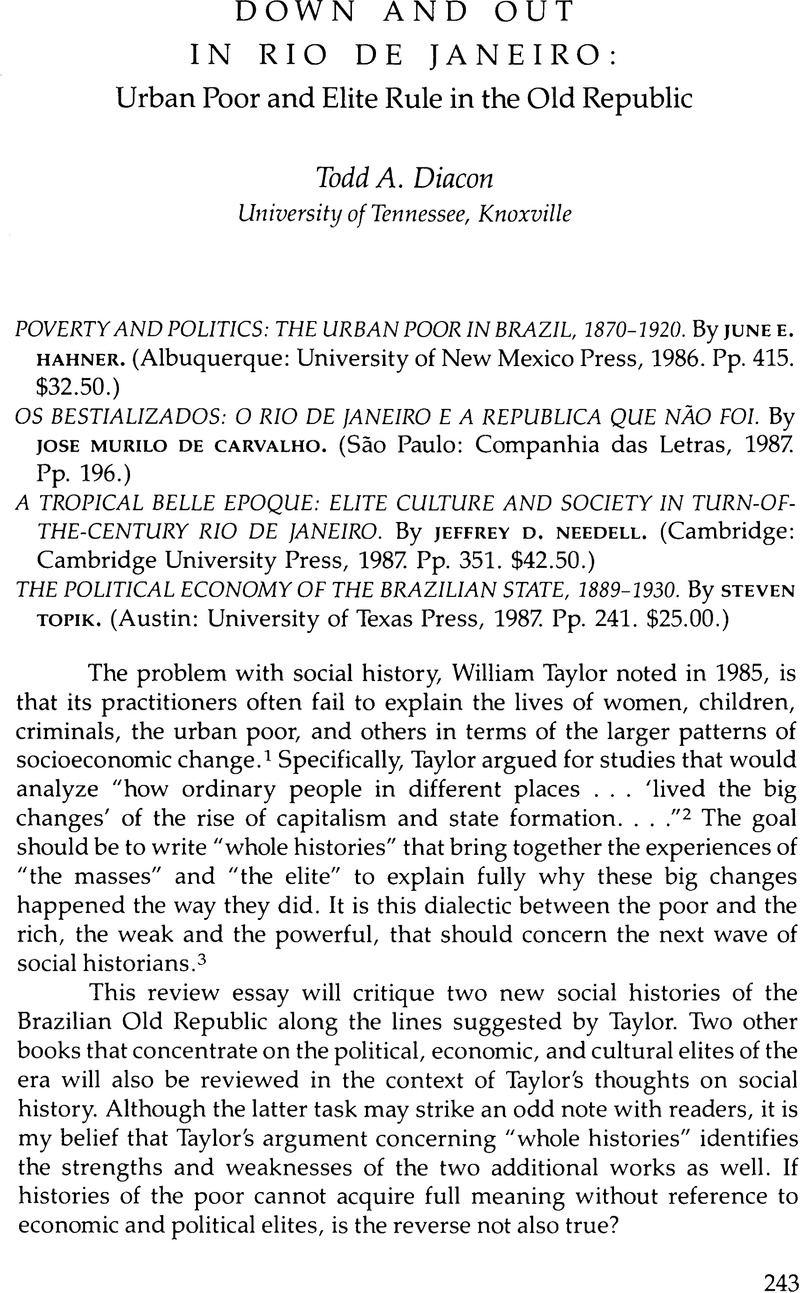Published online by Cambridge University Press: 12 October 2022

1. William B. Taylor, “Between Global Process and Local Knowledge: An Inquiry into Early Latin American Social History, 1500–1900,” in Reliving the Past: The Worlds of Social History, edited by Oliver Zunz (Chapel Hill: University of North Carolina Press, 1985), 115–89.
2. Ibid., 119.
3. Ibid., 120–21.
4. See, for example, Sylvia Ann Hewlett, The Cruel Dilemmas of Development: Twentieth-Century Brazil (New York: Basic Books, 1980).
5. Information contained in this section was drawn from Joel Wolfe, “The Rise of Brazil's Industrial Working Class: Community, Work, and Politics in São Paulo, 1900–1955,” forthcoming Ph.D. diss., University of Wisconsin-Madison, especially chaps. 2–4.
6. For an entertaining look at this phenomenon in present-day Brazil, see Roberto da Matta, “The Quest for Citizenship in a Relational Universe,” in State and Society in Brazil, edited by John D. Wirth and Edson de Oliveira Nunes (Boulder, Colo.: Westview, 1987), 307–35.
7. The standard starting points for discussing the moral economy are James C. Scott, The Moral Economy of the Peasant (New Haven: Yale University Press, 1976); and E. P. Thompson, “The Moral Economy of the English Crowd in the Eighteenth Century,” Past and Present 50 (Feb. 1971):76-136.
8. For a recent work on Canudos, see Robert M. Levine, “‘Mud-Hut Jerusalem’: Canudos Revisited,” Hispanic American Historical Review 68, no. 3 (Aug. 1988):525-72. For thoughts on nation building and the threat of rural rebellion, see Florencia E. Mallon, “Recent Trends in Latin American History: The Nineteenth Century,” Radical History 39:131-41.
9. On the rise of this Paulista bourgeoisie, see Tércio Saes, A Formação do Estado Burguês no Brasil, 1888-1891 (Rio de Janeiro: Paz e Terra, 1985).
10. Needell's failure to discuss the revolt is especially puzzling given his own work on this topic. See Jeffrey D. Needell, “The Revolta Contra Vacina of 1904,” Hispanic American Historical Review 67, no. 2 (May 1987):233-69.
11. Thomas E. Skidmore, Black into White: Race and Nationality in Brazilian Thought (New York: Oxford University Press, 1974), especially chaps. 3, 4, and 5.
12. For a recent review essay on this relationship in Brazil, see Richard Graham, “State and Society in Brazil, 1822–1930,” LAR 22, no. 3 (1987):223-36.